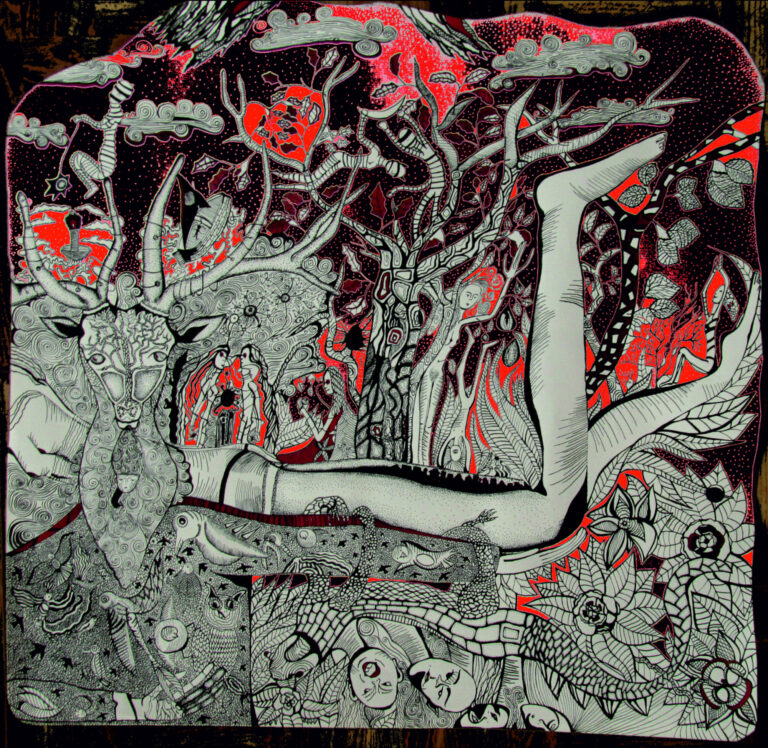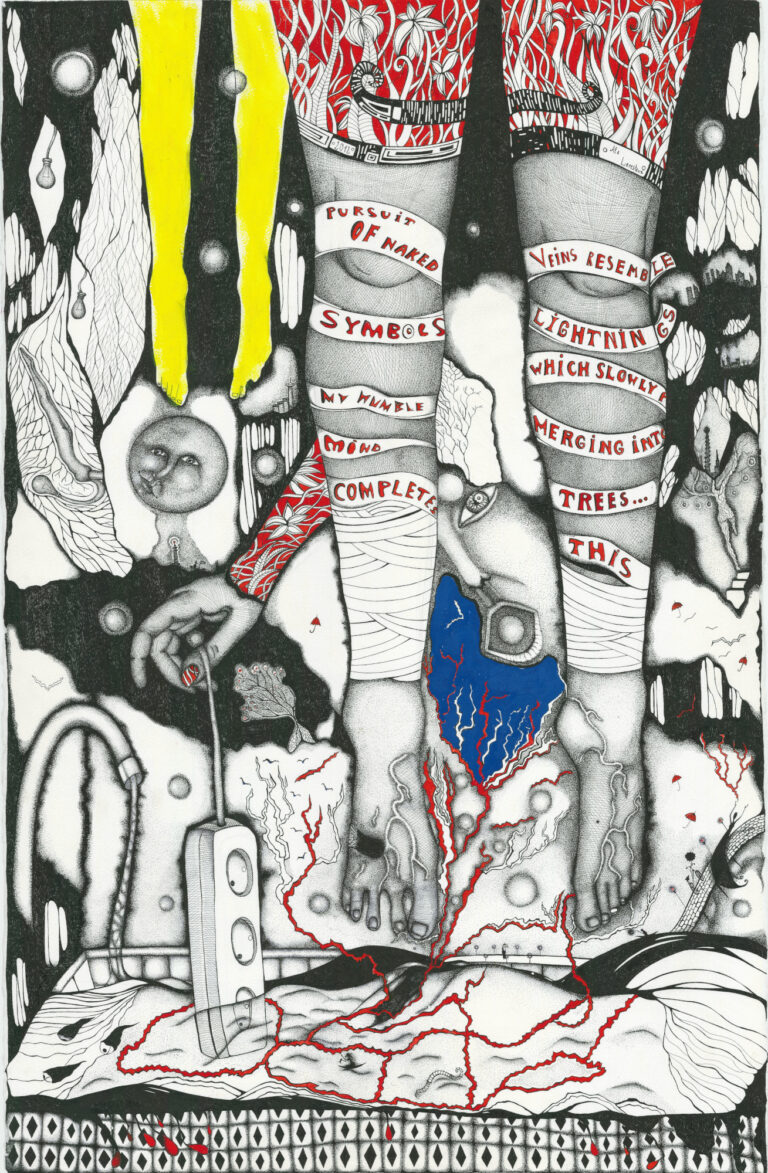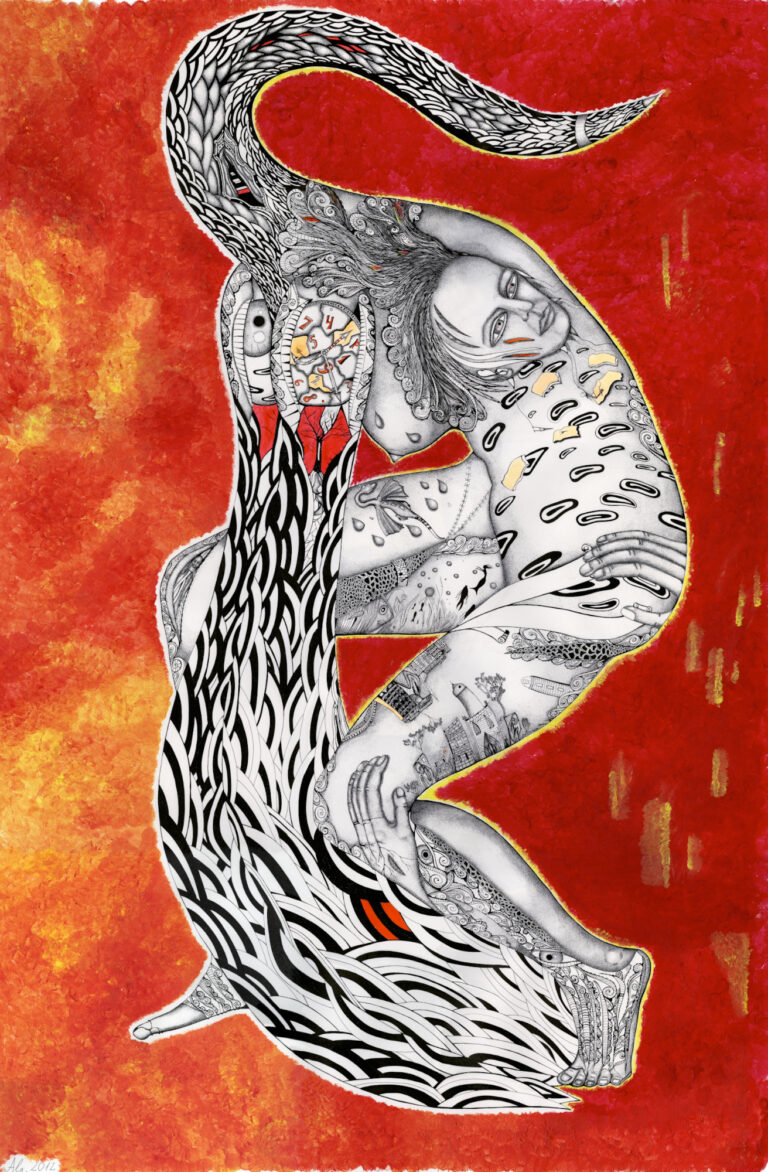










“I dare you!” is an art project dedicated to the concept of the overtone window and is meant to unfold across three distinct spaces, each designed to provoke reflection on societal norms and perceptions.
The first room immerses visitors in a sensory experience of large-scale paintings printed on banners, set against the backdrop of sirens and war noises. The darkness and intricate corridor constructed from paintings and threads create a challenging path, symbolizing the complexity of confronting uncomfortable truths. Themes of the paintings are depictions of some of those ideas such as the Kantian notion of “Ding an sich,” or “thing-in-itself.” The concept suggests that there is a reality beyond human perception, a raw and unfiltered existence that remains elusive and incomprehensible to our senses. This topic is explored in the dyptich of “Flirting with objects”.
Two interconnected works “Deprivation of Sleep” and “Assemblage point” are exploring the concept of the assemblage point in the human psyche, inspired by the teachings of Carlos Castaneda. This concept proposes that our perception of reality is not fixed but can be shifted or moved, altering our understanding of the world around us and our place within it.
Other works explore such topics as border between organic and inorganic, social identity, sacrifice for the greater good and even suicide.
These uncomfortable and controversial concepts, woven into the fabric of the art project, serve to provoke reflection and stimulate conversation, encouraging visitors to engage critically with the themes presented and to question their own beliefs and assumptions.
Transitioning to the second room, visitors encounter mirrors reflecting their own images, accompanied by the resonant sounds of bells. Here, the focus shifts to introspection and self-awareness, prompting visitors to confront their own roles and contributions within the societal framework.
The third room offers a contrasting atmosphere of tranquillity. The same paintings from the first room adorn the walls, but now they seem less threatening, blending seamlessly into the backdrop of everyday life. This transformation signifies the readjustment of the overtone window, illustrating how societal perceptions can shift over time. Together, these rooms guide visitors through a journey of exploration, challenging them to reconsider their understanding of the world and explore the flexibility of perception.
